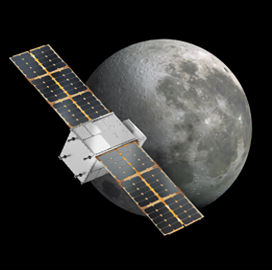
Cubesat propulsion
issues
Thruster Problem Causes Lunar Spacecraft to Miss Target Orbit
A 6u cubesat that missed its original chance to go into orbit around the moon could still make its primary mission if engineers could fix its thrusters.
The NASA-funded LunaH-Map cubesat was one of 10 secondary payloads flown on the Artemis 1 mission that launched on Nov. 16. It was deployed several hours after launch but failed to reach its original orbit target because of propulsion issues.
According to Craig Hardgrove, principal investigator for LunaH-Map at Arizona State University, the thrusters failed to operate as expected, which would have allowed the cubesat to hit a lunar gravity assist and reach the desired orbit. However, he said the spacecraft’s battery was at 70 percent charge, which is still in good condition.
Hardgrove said according to Doppler ranging data, a valve within the thruster might be partially stuck, allowing some iodine fuel through but not enough to generate sufficient thrust. The principal investigator suggested that the blockage happened because of the long wait before liftoff, SpaceNews reported Thursday.
The cubesat could reach lunar orbit via an alternative route by January 2024 if engineers could fix the thruster issue.
Apart from the thruster issue, Hardgrove said all other systems are working. He shared that the spacecraft’s neutron spectrometer was able to collect data about water ice deposits at the lunar south pole five days after launch.

Category: Space




